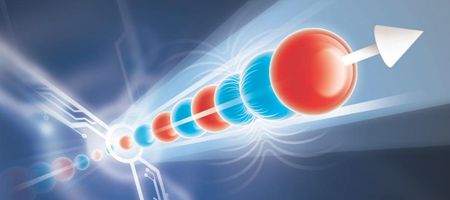University of Cambridge scientists have created a new type of microchip which allows information to travel in three dimensions for the first time.

In future, says the team, a 3D microchip could improve storage capacity by allowing information to be spread across several layers instead of being compacted into one layer.
“Today’s chips are like bungalows – everything happens on the same floor,” says author Dr Reinoud Lavrijsen. “We’ve created the stairways allowing information to pass between floors.”
The researchers used a spintronic chip – which exploits the electron’s tiny magnetic moment or ‘spin’ – which are widely expected to become the next standard memory chip.
They then placed a sandwich of cobalt, platinum and ruthenium atoms on a silicon chip. The cobalt and platinum atoms store the digital information much as a hard disk drive stores data, while the ruthenium atoms act as messengers, communicating that information between neighbouring layers of cobalt and platinum. Each of the layers is only a few atoms thick.
The team then used a laser technique called MOKE to probe the data content of the different layers. As they switched a magnetic field on and off they saw in the MOKE signal the data climbing layer by layer from the bottom of the chip to the top. They confirmed the results using a different measurement method.
“Traditionally, we would use a series of electronic transistors to move data like this,” says lead researcher Professor Russell Cowburn. “We’ve been able to achieve the same effect just by combining different basic elements such as cobalt, platinum and ruthenium.”






